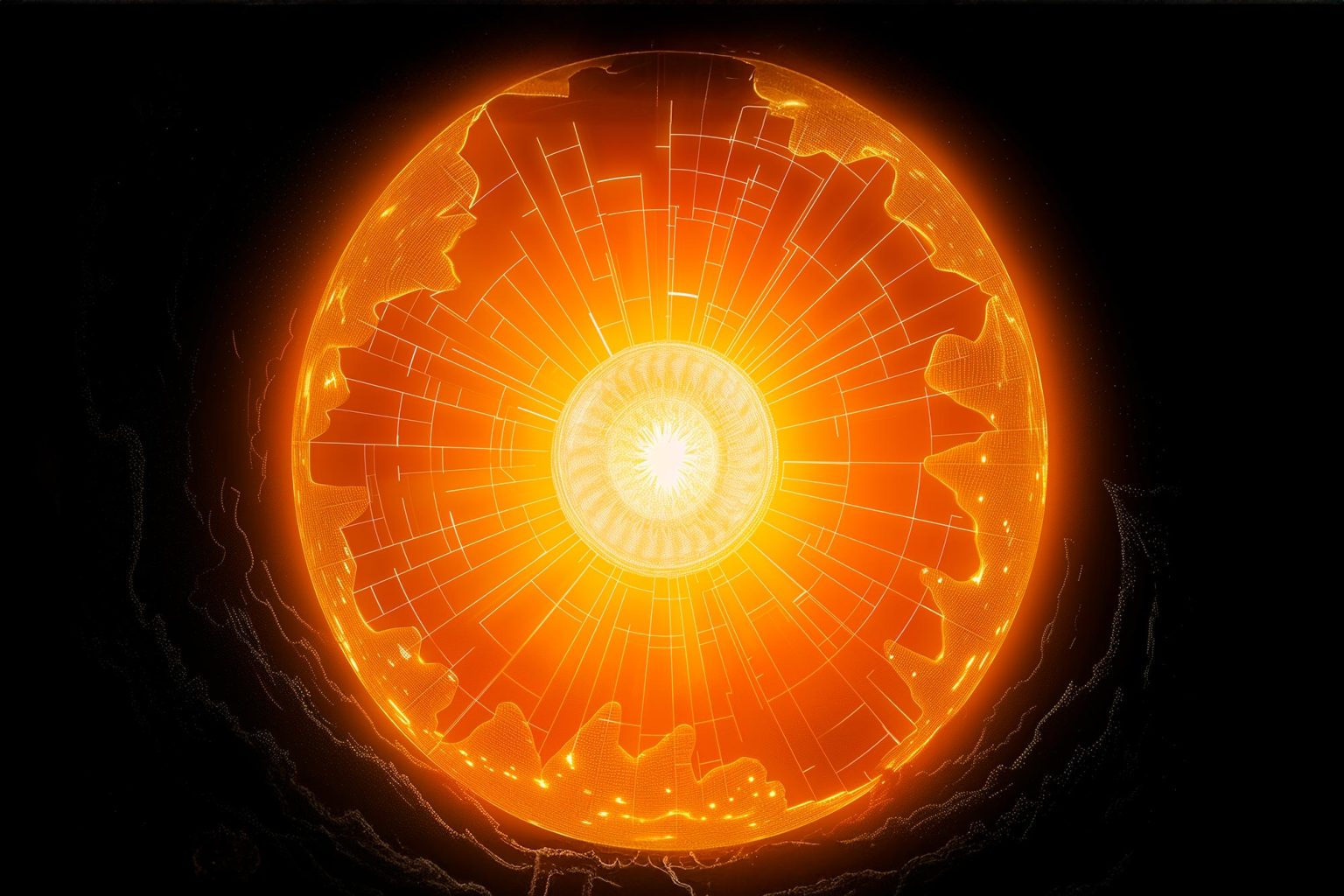"Topological solitons, integral to various natural and technological processes, are being harnessed through non-reciprocal interactions to innovate in materials science and robotics, offering new possibilities for self-propelled motion and advanced functionality. Credit: SciTechDaily.com" (ScitechDaily, Breaking Physics: How Solitons Bend Time, Space, and Rules)
Solitons can break the rules of the field and interact with research. "In mathematics and physics, a soliton is a nonlinear, self-reinforcing, localized wave packet that is strongly stable, in that it preserves its shape while propagating freely, at a constant velocity, and recovers it even after collisions with other such localized wave packets". (Wikipedia, soliton).
The second image portrays the soliton series. That kind of phenomenon can act as an elevator. That allows the system to transmit information between states in the quantum computer. The soliton is one of the most interesting phenomena because if the qubit can be soliton, that will be the new way to transport information.
"An animation of the overtaking of two solitary waves according to the Benjamin–Bona–Mahony equation – or BBM equation, a model equation for (among others) long surface gravity waves. The wave heights of the solitary waves are 1.2 and 0.6, respectively, and their velocities are 1.4 and 1.2.
"The upper graph is for a frame of reference moving with the average velocity of the solitary waves."
"The lower graph (with a different vertical scale and in a stationary frame of reference) shows the oscillatory tail produced by the interaction.[7] Thus, the solitary wave solutions of the BBM equation are not solitons." (Wikipedia, Soliton)
The information can travel from the top of the higher-level solution to the lower-level solution. And then that solution with a lower energy level can rise to a higher energy level. So this thing can act like an elevator between quantum computer states. The thing that makes soliton interesting is that.
Theoretically, if the soliton forms in a closed or insulated chamber. There is no electromagnetic interaction from outside, the soliton could roll the field from inside that theoretical box.
Solitons can be possible in all radiation wavelengths. This thing means that things like gravitational solitons are also possible. And that kind of thing can cause interesting ideas for the primordial black hole forming. There is also the possibility that mysterious dark matter or dark gravitational effect can be some kind of solitons that can form in gravity fields.
 |
Artist's concept of a hypothetical Planet 9 orbiting far from the Sun (BBC, Space: Could Planet X actually be a black hole?)
Gravitational solitons are interesting things if they exist. The soliton can be an extremely powerful phenomenon.
Nobody knows how high the energy level in this phenomenon can rise. If the gravitational soliton is possible that phenomenon can form the nano-size black holes. And those things can make the ultimate qubits possible.
If the planet's nucleus is colder than 3 kelvin background. That thing can make it possible for outside energy to press the planet into the black hole. If small black holes are possible, that thing explains lots of things in dark matter.
"Epsilon Indi has been identified as the smallest and coolest dwarf star with solar-like oscillations, known as “starquakes,” offering insights into stellar composition. Credit: SciTechDaily.com" (ScitechDaily, Epsilon Indi “Starquake” Shatters Astronomical Records and Expectations)
Solitons can also explain the fast movement of Epsilon Indi. And maybe it can explain the mysterious Planet X. Or it can also make it possible to think about the planet-mass black holes.
The star, named Epsilon Indi, is one of the fastest stars in our galaxy. The reason for Epsilon Indi's fast specific motion can be soliton in its atmosphere.
In that model, the static soliton is like Jupiter's great red spot. The soliton can be in the Epsilon Indi's magnetic field. And it can act like a giant ion engine. This thing can push the Epsilon Indi through the galaxy. The magnetic soliton will take plasma around
One of the reasons why this kind of soliton can form in the Epsilon Indi magnetic field is the pike-shaped X- or gamma-rays or gamma-ray tornados. So high energy radiation may hit Epsilon Indi, but that means that there is a so-called planet-mass black hole, that is purely a theoretical phenomenon.
But the planet-mass black hole can form when the planet's nucleus is colder than the universe around it. In that case, the planet's nucleus can turn colder than its shell. Then the energy starts to fall in the planet's nucleus, and it can form a planet-size black hole.
Sooner or later radioactive material ends up in the planet's nucleus. Then the planet's nucleus turns solid. There is no internal temperature. That can warm the planet's core and shell. If the planet is far away from its star, its surface temperature drops to zero kelvin degrees. Or actually, the temperature on the planet's surface is 3 kelvin, because the energy level in the universe is three degrees higher than in laboratories.
The rogue planet can be superconducting, and all atoms of it can be in the Bose-Einstein state. That state can make it possible for magnetic fields can spin without resistance. That thing can cause extremely high power magnetic soliton. The energy from the cosmic background can feed that soliton until it takes the gravity field with it.
In laboratories, the zero kelvin is -217,15 C. That means that the temperature of the planet's core can be lower than three-kelvin radiation. And that causes the effect that energy falls into the planet's core. The falling energy can pull the planet in its nucleus, and that can cause the hypothetical phenomenon. That the planet turns into a black hole. The energy whirls will start to transmit energy out from the planet's nucleus and faster and faster spinning electromagnetic fields can finally take gravitation with it.
https://www.astronomy.com/science/is-planet-nine-a-black-hole-or-a-planet-harvard-scientists-suggest-a-way-to-find-out/
https://www.bbc.co.uk/newsround/49910160
https://science.nasa.gov/solar-system/planet-x
https://scitechdaily.com/breaking-physics-how-solitons-bend-time-space-and-rules/
https://scitechdaily.com/epsilon-indi-starquake-shatters-astronomical-records-and-expectations/
https://en.wikipedia.org/wiki/Epsilon_Indi
https://en.wikipedia.org/wiki/Soliton







No comments:
Post a Comment
Note: Only a member of this blog may post a comment.